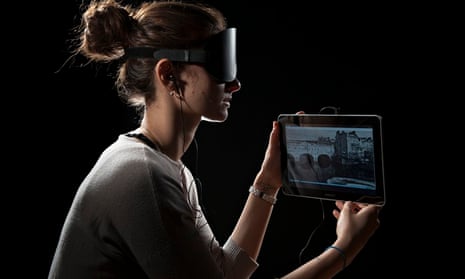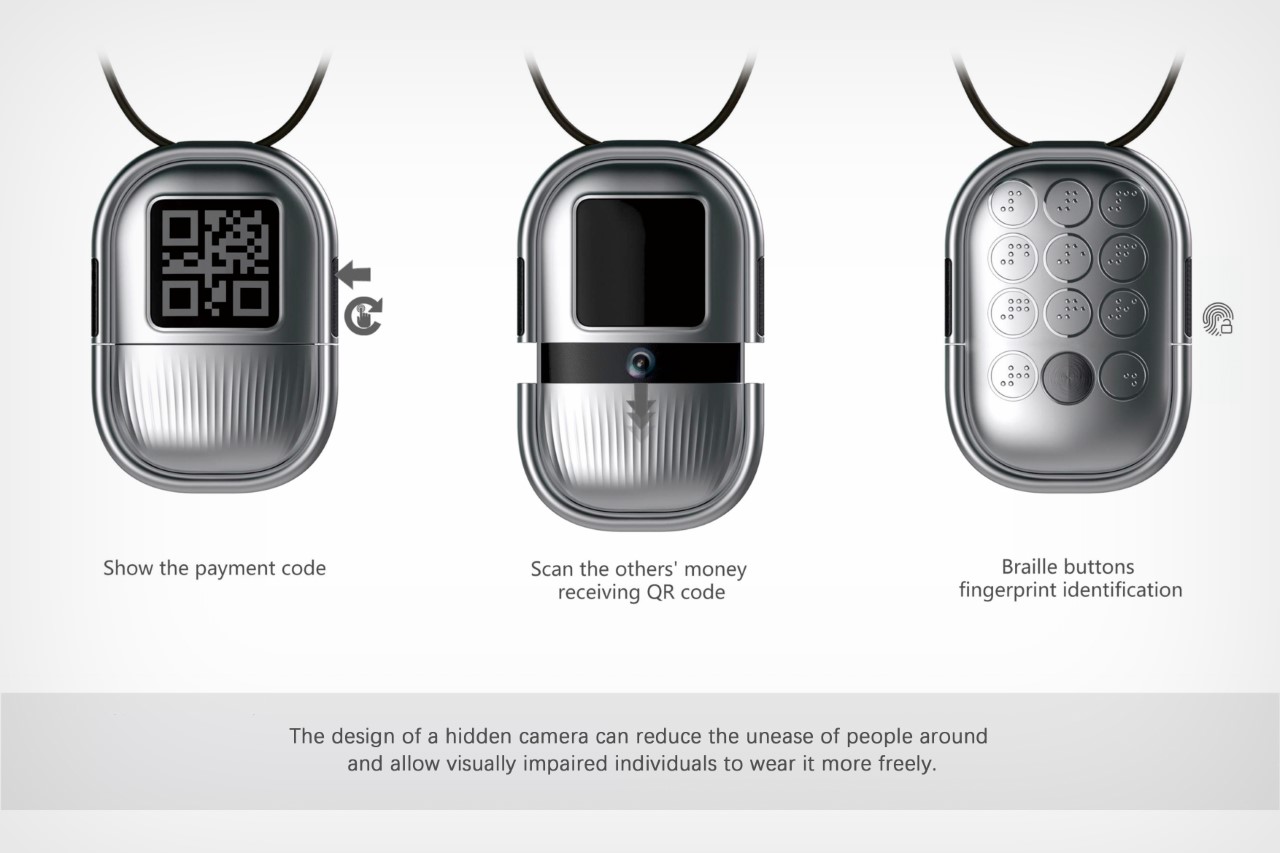Discover Ingenious Devices Created for the Aesthetically Impaired
The development of cutting-edge devices for the visually impaired represents a significant improvement in availability and freedom. Technologies such as clever glasses with AI capacities and mobile applications made to provide auditory summaries are reshaping daily experiences for customers. Furthermore, wearable tools that use haptic feedback improve ecological awareness, while modern Braille innovations supply new means to engage with message. As these devices remain to develop, their impact on the lives of those with visual problems elevates crucial questions regarding the future of inclusivity and autonomy in various elements of life. What lies in advance in this technological landscape?
Smart Glasses for Navigation

Smart glasses created for navigation are transforming the means visually impaired people interact with their environment. These advanced gadgets utilize a mix of electronic camera technology, man-made intelligence, and acoustic feedback to offer real-time info regarding surroundings. By employing barrier detection systems, wise glasses can signal customers to prospective threats, enabling safer mobility in both strange and acquainted setups.
The assimilation of GPS technology additionally boosts navigation capabilities, allowing users to get auditory directions as they move. This hands-free strategy not just fosters independence but additionally equips visually impaired individuals to navigate city landscapes with increased confidence. Additionally, numerous wise glasses are furnished with attributes that identify sites and street signs, offering contextual information that improves the individual experience.
Moreover, the growth of these tools is continually progressing, with companies working to boost the accuracy of object recognition and broaden the variety of navigational attributes. As smart glasses become more inexpensive and accessible, they hold the prospective to considerably transform day-to-day live for visually impaired users. Ultimately, these cutting-edge devices represent an essential action toward inclusivity, offering improved wheelchair and a higher feeling of freedom for individuals navigating the globe around them.

Mobile Apps for Daily Living
Just how can mobile applications enhance the lives of aesthetically damaged people? Mobile apps are transforming the way aesthetically impaired individuals navigate their settings, take care of day-to-day jobs, and access information. These applications give necessary support with numerous performances, promoting self-reliance and improving lifestyle.
Several cutting-edge mobile applications are made especially for daily living. Apps like Be My Eyes link aesthetically impaired users with sighted volunteers using video clip phone calls, allowing them to obtain real-time support with tasks such as reviewing tags or browsing unfamiliar areas. Likewise, Seeing AI, developed by Microsoft, utilizes expert system to define environments, reviewed text, and identify objects, properly changing a smart device into a powerful device for daily aid.
Additionally, navigating applications tailored for the visually impaired, such as Aira and BlindSquare, offer audio-based directions and environmental information, enabling customers to traverse their environments securely and confidently. Beyond navigating and prompt help, mobile applications additionally support organization and job monitoring, with features that help customers establish suggestions, produce order of business, and track visits. In recap, mobile applications act as vital sources, empowering visually impaired individuals to lead even more independent and satisfying lives.
Wearable Technologies for Assistance
Empowerment through modern technology is progressively obvious in the realm of wearable tools created to assist visually impaired people. These cutting-edge tools integrate effortlessly into day-to-day life, boosting navigating and providing essential comments to customers. Smart glasses outfitted with video cameras can acknowledge faces and read message aloud, allowing individuals to interact even more with confidence in expert and social setups.
Another remarkable development is the use of haptic comments systems in wearable devices. These systems utilize resonances or other tactile signals to share info regarding the individual's setting, such as barriers or adjustments in surface, enhancing movement and safety and security. Wearable modern technologies likewise include wristbands that link to mobile phones, alerting individuals to notices with subtle resonances, hence improving connectivity without reliance on aesthetic signs.
As these innovations continue to evolve, they are not just boosting freedom for article source visually damaged people but likewise promoting a greater feeling of addition in society. By linking the space in between difficulties faced in day-to-day living and the capacity for freedom, wearable modern technologies offer as essential tools in the pursuit for equal rights and empowerment for those with aesthetic problems.
Audio Description Tools
Sound summary tools play an important function in boosting access for visually impaired people, giving them with the capability to involve with aesthetic media. Speech-to-text devices for low vision. These devices provide narrated descriptions of essential aesthetic components in films, tv programs, and live efficiencies, guaranteeing that customers can totally understand the context and feelings shared via visuals
Audio summary can be integrated right into numerous systems, including streaming services, cinema testings, and live cinema. Numerous prominent streaming solutions now include audio description as an ease of access feature, enabling audiences to choose it easily. Along with mainstream media, specialized applications likewise exist, giving audio descriptions for art events, galleries, and various other cultural events.
The effectiveness of audio summary rests on the skill of the try this out narrators, who need to communicate aesthetic details succinctly without diminishing the initial sound. Technologies in this area are likewise leading the way for more individualized experiences, where individuals can readjust the level of detail and pacing according to their choices.
Braille Innovations and Gadgets
Braille technologies and tools have significantly changed the method aesthetically impaired individuals interact with message and info. Modern developments have actually led to the advancement of versatile devices that boost literacy and freedom amongst users.
Moreover, portable Braille notetakers incorporate traditional Braille input with modern-day capabilities, facilitating note-taking, organizing, and file modifying on the go. Screen readers for the blind. These compact tools often feature text-to-speech abilities, bridging the space in between Braille and acoustic info
Additionally, innovative Braille printers have emerged, permitting customers to produce Braille tags, papers, and academic products efficiently. This accessibility fosters greater engagement in instructional and expert environments, inevitably advertising inclusivity.
Moreover, research into wise Braille technologies remains to broaden. Gadgets that integrate synthetic intelligence are being discovered to provide real-time navigating support and contextual information, enhancing the customer experience in diverse setups. On the whole, these technologies show a you could try this out dedication to equipping visually damaged individuals through technology, guaranteeing they can easily accessibility and involve with the world around them.

Final Thought
The innovation of ingenious devices for the aesthetically damaged considerably improves independence and quality of life. Smart glasses, mobile applications, wearable innovations, audio summary tools, and Braille innovations jointly empower individuals by giving necessary navigation assistance, ecological understanding, and improved analysis experiences. These innovations not only foster better addition but additionally promote freedom in everyday activities, inevitably adding to a much more available and fair culture for visually impaired people. Proceeded development in this area holds guarantee for more enhancements.
As clever glasses become more inexpensive and obtainable, they hold the potential to substantially change everyday life for aesthetically impaired customers. Mobile apps are reinventing the means visually damaged customers browse their atmospheres, manage everyday jobs, and accessibility details. Applications like Be My Eyes attach aesthetically damaged individuals with sighted volunteers through video clip telephone calls, permitting them to obtain real-time assistance with jobs such as checking out tags or browsing strange areas.Furthermore, navigation apps customized for the aesthetically damaged, such as Aira and BlindSquare, supply audio-based instructions and environmental information, allowing individuals to traverse their environments securely and with confidence.The development of innovative devices for the aesthetically impaired dramatically improves self-reliance and quality of life.